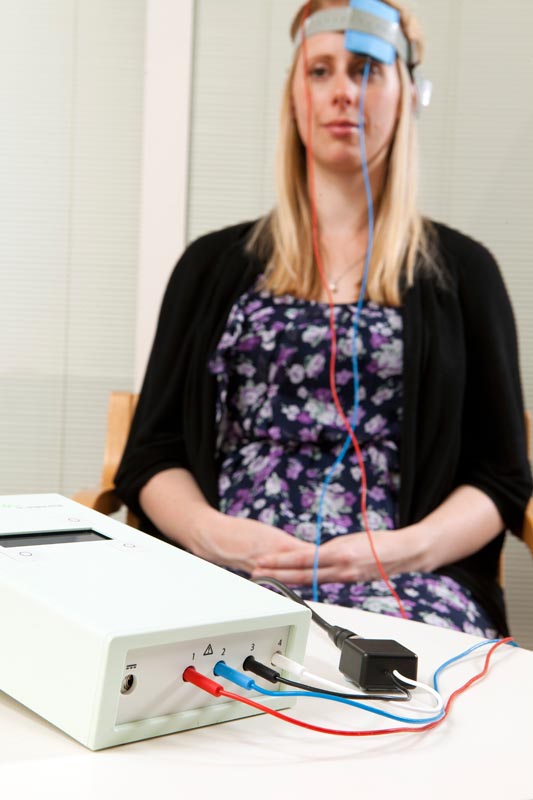People that hate math bum me out. There are a lot of them, particularly in the subset of people I often interact with (20 to 40-year-olds that do art or music things). From a certain perspective, math is the perfect storm of pointless, norm-y, and, crucially, very hard. The whys of modern math hatred are actually pretty interesting (from algorithm phobias to many, many terrible math teachers), but the difficulty of math is pretty straight-forward. Math is highly convoluted, effort-intensive puzzlework involving strange symbols and high degrees of abstraction, where the only “good enough” is being 100 percent correct. This is different than most anything in our day to day lives.
Courtesy Thomas Weickert, Neuroscience Research Australia
The last couple of sentences above could actually double for an explanation of why math is actually awesome, but hard is hard, for any brain. What if there was a way, an easy physical way, of making math less difficult? Like a pill or, say, zaps to the skull? The latter is a real possibility, uncovered through some recent research at the University of Oxford. The equipment for at least one of the techniques is cheaper than your average math textbook, and could begin testing in classrooms very soon.
Videos by VICE

The DC Stimulator Plus, one commercially available
TDCS device
Of course, we’re probably still a lot farther away from electric zaps not conjuring One Flew Over the Cukoo’s Nest associations of forced brutality, but a post at Nature assures the methods are painless. The first, announced to some fanfare in 2010, is called transcranial direct-current stimulation (TDCS). This method, reported to feel like a “baby tugging gently on your hair,” helped study volunteers “learn and remember a number system made up of unfamiliar symbols.” What’s more, the effect was still seen in subjects re-evaluated six months later.
The more recent technique, called transcranial random-noise stimulation (TRNS), is kind of just what it sounds: electrical pulses sent randomly into different parts of the brain, thus exciting them and leaving the subjects with better abilities for memorizing mathematical facts and for performing complex calculations. In the study, 13 volunteers got random zaps to the prefrontal cortices of their brains, the portions associated with higher cognitive abilities, and, indeed, they performed better on mathematical tasks than a control group. Brain imaging using near-infrared spectroscopy supports the general idea, finding that blood flow to the related portions of the brain peaked earlier in subjects that had received the treatment.
While the study appears in last week’s issue of Current Biology, it’s worth noting that 13 is an extremely small number of participants to be drawing huge conclusions from. Daniel Ansari, a cognitive neuroscientist at the University of Western Ontario, also expressed to Nature some skepticism of the work: “The training used here is highly contrived and does not resemble the way in which math skills are typically acquired.”
One of dozens of do-it-yourself-TCDS videos on YouTube.
It’s true: people become “good” at math through intensive practice and repetition rather than just looking at a thing and suddently getting it a la Good Will Hunting. In that, math is a lot like most anything else worth doing: one becomes good at it. But, the catch is that different people start from different places: not every prefrontal cortex is created equal, nor is every math teacher. The idea of being able to level the playing field is intriguing, particularly in the cases of students with special difficulty in learning math. So, the idea is less math steroid than math prosthesis. That said, if I could have zapped my brains every morning before differential equations class, I’d be a piece of toast by now, but probably a bit better at inverse Laplace transformations.
Reach this writer at michaelb@motherboard.tv.